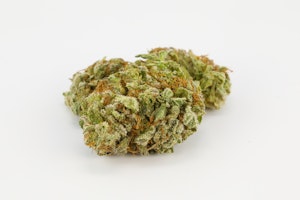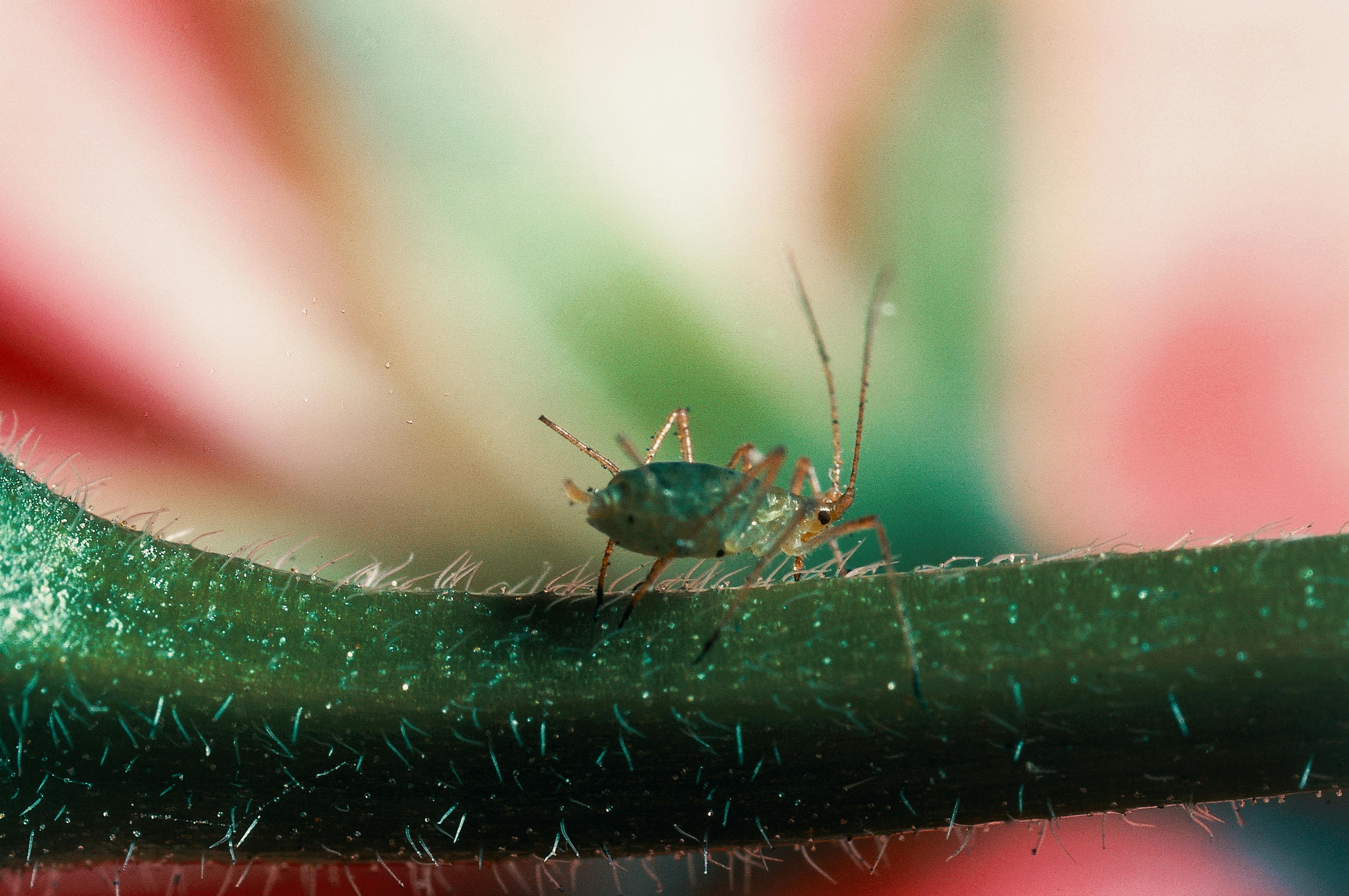
Aphids (Aphidoidea) on a pear tree branch. (Photo by DeAgostini/Getty Images)
Learn to Identify Spider Mites, Aphids and Other Cannabis Pests
There’s nothing more devastating than cannabis pests destroying all your hard work.
Pests! Dirty, rotten pests! They can kill your crop and leave you budless. That’s why it’s important to keep every aspect of the grow process totally clean and sterilized, from the grow room itself to the tools you use, the grow medium and even your clothes. That’s why large grow ops require visitors to suit up as though they’re about to be launched into space before entering their grow rooms.
Here are some of the most common cannabis pests. We hope you’ll never have to deal with them, but, if you do, this guide will make sure you’re prepared to catch the problem as soon as possible.
What are Spider Mites?
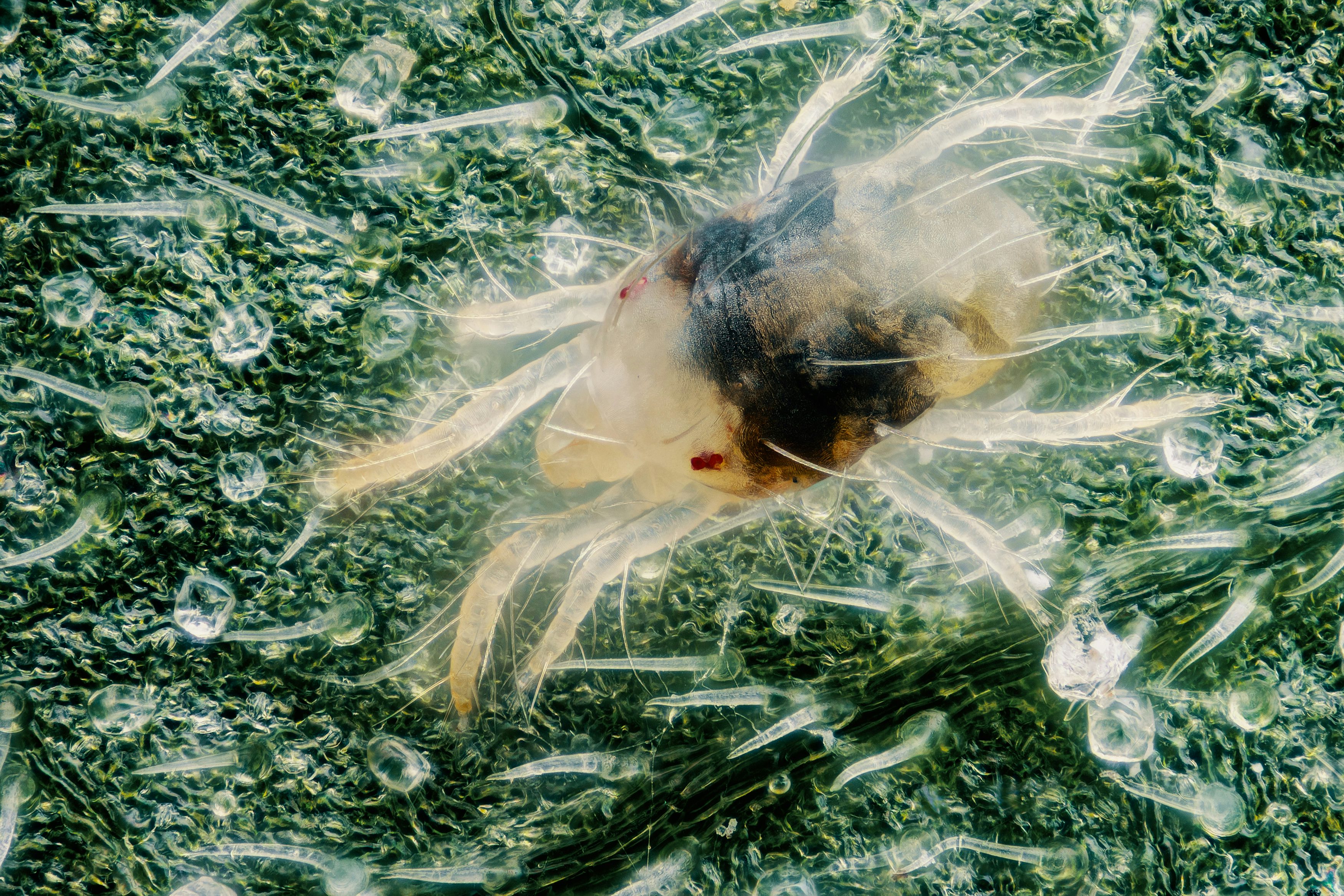
Spider mites are the most common cannabis pest and can be found in both outdoor and indoor grows. These microscopic arachnids can be extremely difficult to spot. Symptoms of spider mites might appear like nutrient deficiencies at first sight.
Spider mites are found on the underside of leaves where they sap the plant of life-sustaining nutrients. You will likely spot the signs of spider mites before you see the actual pests. Leaves will begin to develop tiny yellow spots which can grow to envelop the whole leaf as the mites continue to feed.
A common way to spot spider mites is by misting a cannabis plant with water which will reveal the protective cobwebs that they weave.
What Causes Spider Mites?
Mites are most common in grow rooms that have not been properly cleaned and maintained. They can infest a crop in countless ways by hitching a ride on clothing, infected clones, tools and even pets.
Spider Mites Control
Master Grower Jorge Cervantes warns that mother plants often carry spider mites, making it a good idea to spray mothers with insecticides to prevent spreading the infestation through clones. A grow room that has been infected with spider mites must be sterilized with bleach and all tools and equipment must be cleaned thoroughly to ensure that there are no mites left. Spider mites struggle to reproduce in low temperatures so maintaining a temperature of 60°F can be an effective way to eliminate this pest. Applying Tanglefoot to the base of your plants can also ensure that mite infestations do not spread.
For an organic alternative to store-bought miticides, citrus oil, garlic or cayenne pepper can be used to ward off mite infestations. Oddly enough, growers can also fight spider mites by introducing predatory mites to infested plants. Neoseiulus californicus and Mesoseiulus Phytoseiulus are the most common.
What are Aphids?
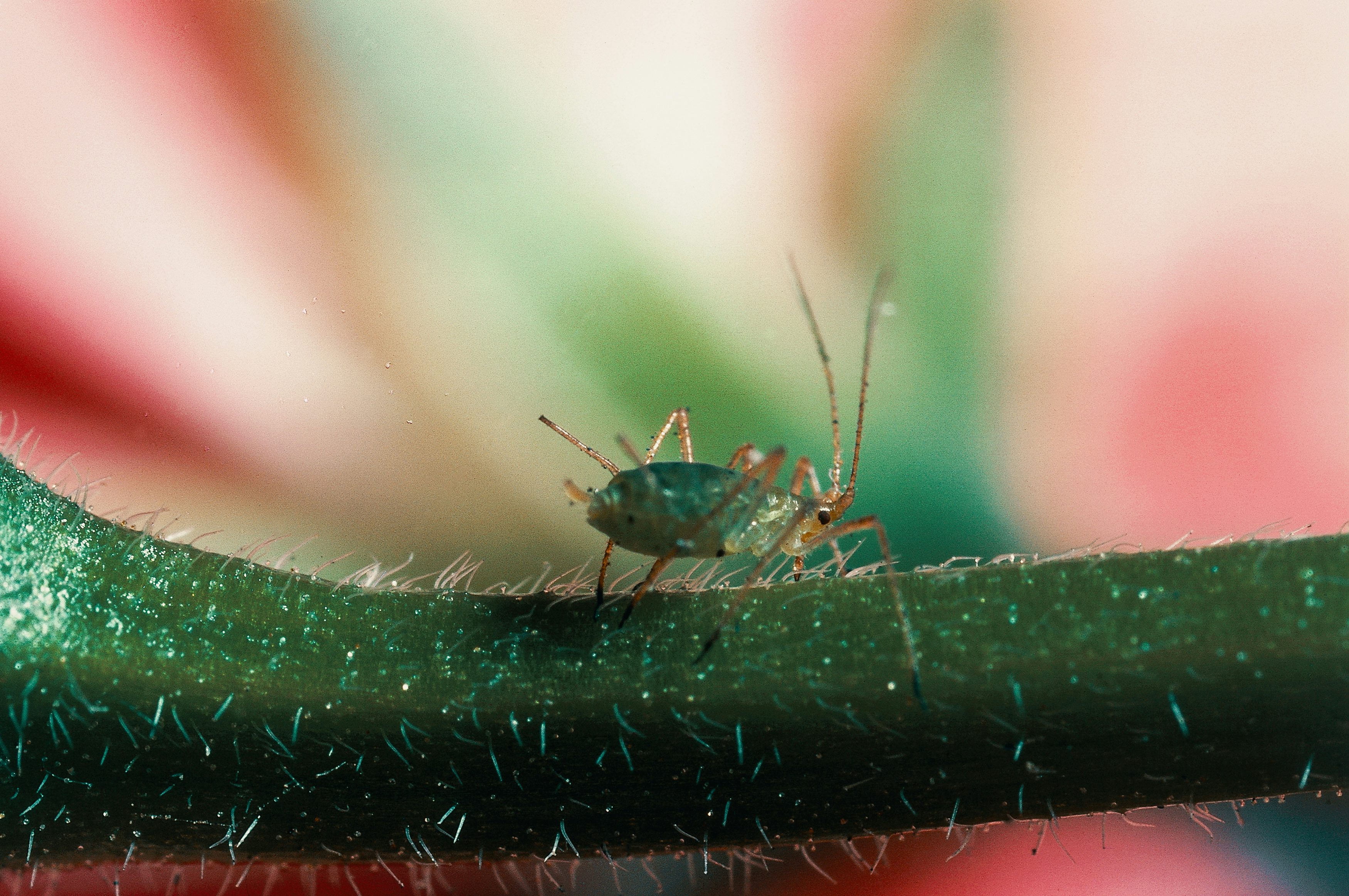
Aphids are about the size of a pinhead. They are found on the buds, branches and under leaves. They can vary in color and sometimes appear pink, but most of the time they are black. It can sometimes be easy to confuse them with Fungus Gnats as some can grow wings.
They can be especially destructive since they also carry diseases and fungi which can infest your crop and endanger it further.
Where Do Aphids Come From?
Aphids are rarely found in indoor grows, but when they do attack outdoor grows, they can be extremely difficult to get rid of. They can enter indoor gardens by hitching a ride on clothing or gardening tools, so it’s important to keep all of your tools clean and remember to change your clothes before entering an indoor grow.
Aphids Life Cycle
Aphids can reproduce quickly, spawning up to 100 larvae a day which can start to reproduce shortly after birth.
Aphids Control
Aphids that develop wings are usually the ones to spread infestations from plant to plant. This can be prevented by placing sticky insect traps near the top and the base of plants. Growers also swear by Neem oil as an insecticide that is effective at ridding gardens of aphids and many other pests.
The natural predators of aphids are insects known as Lacewings. Ladybugs can also be an effective predator for aphids.
Part of preventing an aphid infestation also requires watching out for ants. As aphids feed on plants they produce a substance known as honeydew, which ants love so much that they often transport aphids from one plant to another to have them create honeydew. Ants can be kept at bay by sealing the grow room and using Borax, or Boric Acid, as an insecticide.
Root Aphids
These are an entirely different kind of pest that can be extremely dangerous to a cannabis plant. Growing with coco fiber can make these pests difficult to spot as they are tiny and brown or olive in color. Because they attack the root system they can stunt or kill plants quickly, but can be difficult to identify since the symptoms may look similar to a nutrient deficiency. They usually die off in temperatures lower than 60°F, but can otherwise be resistant to insecticides and continue to reproduce after being sprayed. The most effective way to get rid of root aphids is to use nematodes as predators. The fungus Bauveria, found commercially as BotaniGard, is considered to be very effective.
What are Fungus Gnats?
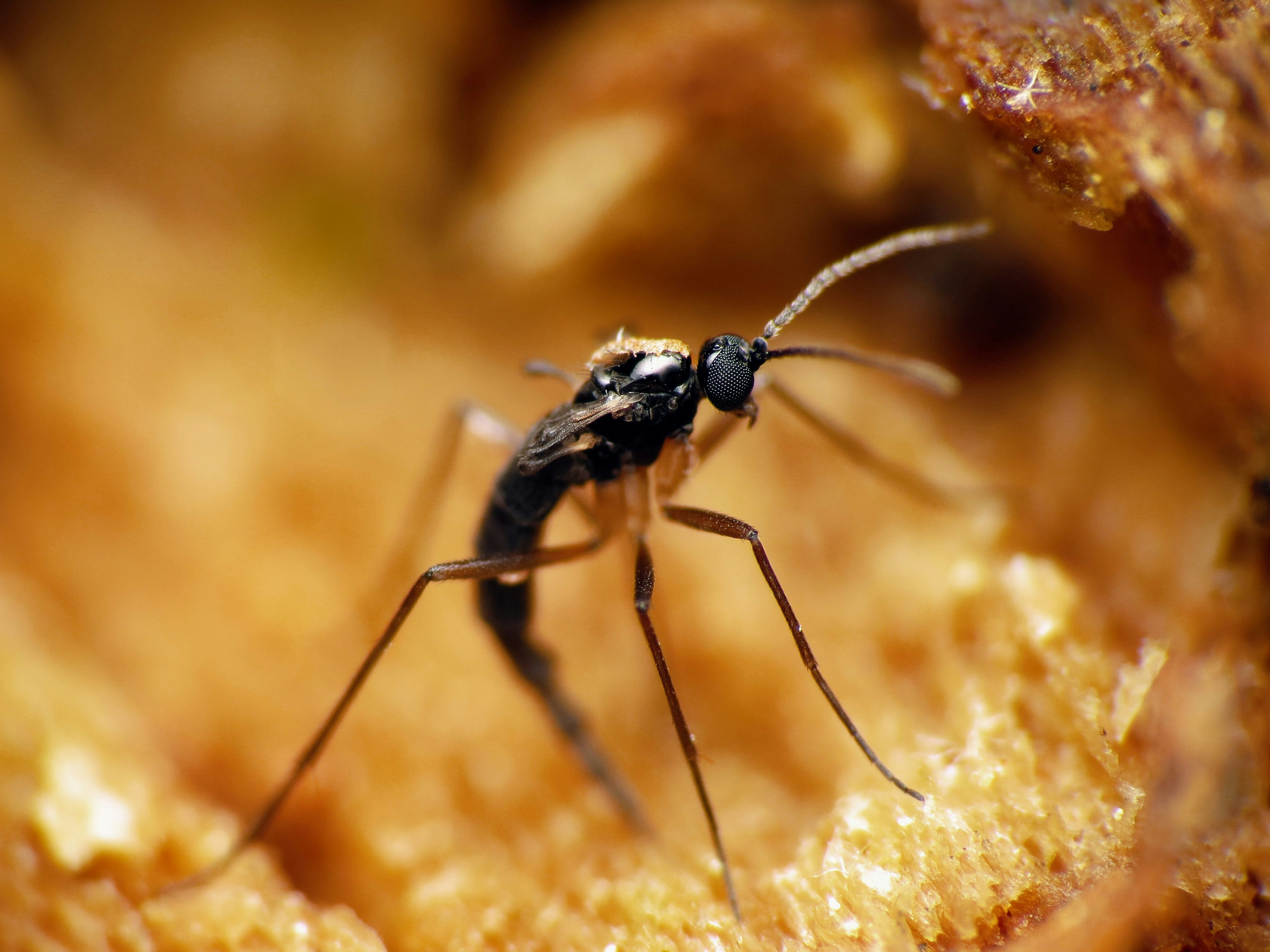
Fungus Gnats are long little flies that are black in color and can be found in soil and around the base of plants. These pests feed on dead plant matter in the soil but are especially dangerous because they also feed on the root hairs and can cause severe damage to root systems, leaving them susceptible to fungal infections. Adult gnats can spoil buds as they tend to be attracted to the flower and get stuck in the resin, creating a gross mess of insect-covered buds.
Where Do Fungus Gnats Come From?
Fungus Gnats can be found in moist environments and are often found in soil. However, they are also common in certain soilless hydroponic grows like NFT systems as the grow mediums can offer damp environments where these insects thrive.
If there is excessive moisture, algae or nitrogen in your soil, this can be an ideal breeding environment for fungus gnats. This is why it is important to ensure that you are not overwatering or overfeeding plants with nutrient solution, which can be bad for the crop even without the presence of pests.
As with other winged pests, sticky insect traps can be a good way to keep fungus gnats away from your plants. But ensuring a clean growing environment is always a good idea as well. Nematodes and Geolaelaps Mites can be effective predators against fungus gnats.
Other Common Cannabis Pests
Beetles
There are a wide variety of beetles that can infest your cannabis plants depending on where in the world the crop is planted, but nearly all beetles plant larvae which can feed on roots and bore through cannabis plants stunting their growth.
Caterpillars
Caterpillars may turn into beautiful butterflies, but in order to get there they have to munch away at the leaves of your cannabis plants and we can’t have those kinds of shenanigans. Caterpillars can be easy to spot and remove (mostly by hand), but it’s important to remember that these cute little critters can be fatal to your plant, causing open wounds that can invite crop-threatening diseases.
Slugs and Snails
Slugs and snails are considered to be a minimal threat to plants once they have taken root and begun to mature, but during the early stages of growth, they can be fatal to a cannabis crop. They munch at seedlings and snuff out cannabis plants before they’ve had a chance to grow.
For more information on pests and how to get rid of them, see Jorge Cervantes’ Cannabis Encyclopedia.
Herb Recommended Products:
READ MORE

